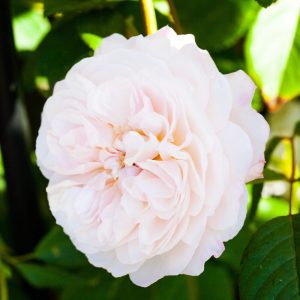Description
Thymus citriodorus, also known as lemon thyme, is a perennial herb in the Lamiaceae family. It is native to the Mediterranean region, but is now widely cultivated around the world. It is prized for its lemon-scented leaves, which can be used in cooking, particularly in Mediterranean and French cuisine. The plant also produces small, pink flowers, which are edible and can be used as a garnish. It is also known to be a great companion plant, helping to repel pests and attract pollinators in the garden.
Key Facts
- Common Name(s):Lemon Thyme
- Hardiness:Fully hardy through most of the UK
- How big will I get? Thymus citriodorus can grow to a height of 0.3m and a spread of 0.3m.
- Did You Know That:In ancient Greece, Thymus citriodorus was used as a symbol of courage and is believed to have been used in the process of embalming?
Plant Calendar
A rough guide to how this plant will change through the year.
| Jan | Feb | Mar | Apr | May | June | July | Aug | Sept | Oct | Nov | Dec | |
| Flowering Time |  |
 |
||||||||||
| Foliage Colour |   |
  |
  |
  |
  |
  |
  |
  |
  |
  |
  |
  |
| J | F | M | A | M | J | J | A | S | O | N | D |
 |
 |
||||||||||
  |
  |
  |
  |
  |
  |
  |
  |
  |
  |
  |
  |
Care Guide

Soil Requirements
Thymus citriodorus is a versatile plant and can cope with wet or drier soils, but prefers there to be decent drainage. This plant is not tolerant of acidic soil, it requires either a neutral or alkaline soil to grow.

Best Position
Thymus citriodorus can handle either an exposed or a sheltered position and requires full sun to thrive, this consists of more than six hours of direct sunshine per day.

Maintenance
Thymus citriodorus should be cut back after it finishes flowering will promote growth the following year by redirecting energy from seed production and foliage maintenance to root growth.

Pest, Diseases and Wildlife
Thymus citriodorus is generally pest free, and it tends not to have problems with diseases. It is also known to attract bees, butterflies and other pollinators. It is not considered to be toxic.
![Thymus citriodorus [Lemon Thyme]](https://leafwise.co.uk/wp-content/uploads/2022/10/Thymus-citriodorus-Lemon-Thyme-Variegated-198624-1.jpg)




